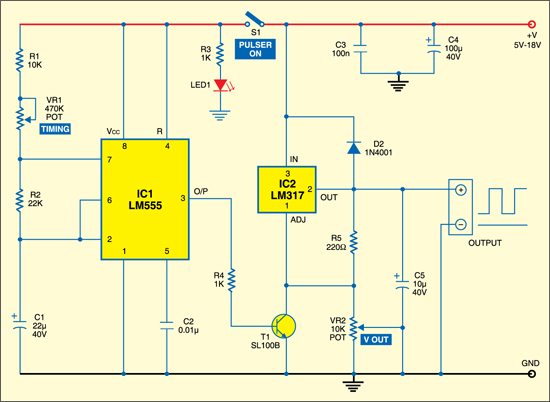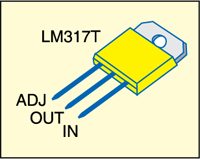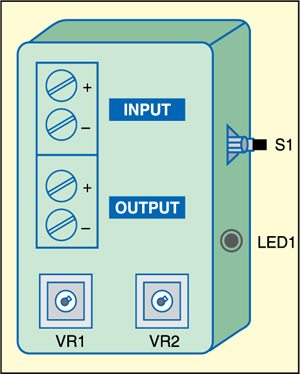 The idea behind this multipurpose power pulser is very simple. As shown in the circuit (Fig. 1), it uses a low-frequency oscillator to drive a voltage regulator.
The idea behind this multipurpose power pulser is very simple. As shown in the circuit (Fig. 1), it uses a low-frequency oscillator to drive a voltage regulator.
Multipurpose power pulser circuit
Timer chip LM555 (IC1) is wired as an astable multivibrator. Components R1 and R2, VR1 and C1 produce the free-running frequency. You can adjust it to some extent by varying potentiometer VR1. The output of IC1 at pin 3 controls the switching on/off of adjustable voltage regulator LM317T (IC2) through NPN transistor SL100B (T1).
You can use input power supply of 5V-18V, 1.5A and adjust the output to 1.25V-15V, 1.5A. This pulsed output can be used for incandescent lamps, DC motors, electromagnetic relays and LEDs.

After selecting the desired load, power up the unit with switch S1 in ‘on’ condition. Now connect a digital multimeter across the output terminal (pin 2) of IC2 and set the required output voltage using potmeter VR2. The frequency of IC1 can be set through VR1, provided switch S1 is ‘on.’ Note that with 18V DC input, the maximum output voltage is approximately 15V only. The frequency of the astable multivibrator can be selected by using values of components R1, VR1, R2 and C1 according to your requirement.


Construction & testing
Assemble the circuit on any general purpose PCB and enclose in a cabinet as shown in Fig. 3. Connect switch S1 and LED1 on the side of the cabinet. Fix potmeters VR1 and VR2 at the bottom of the front side. Also fix the input and output terminals on the front side of the cabinet. Using external wires, connect the power supply to the input terminal and the load to the output terminal.
The article was first published in December 2008 and has recently been updated.








